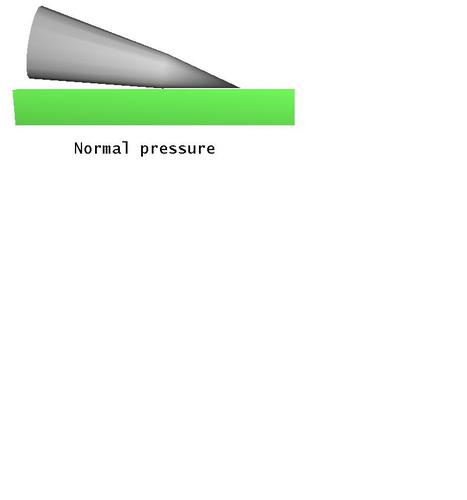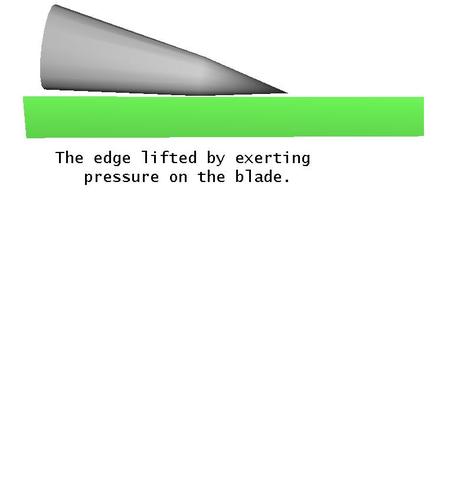Results 1 to 10 of 22
Hybrid View
-
01-11-2014, 12:39 PM #1
 A theory on Over Honing (not mine BUT interesting)
A theory on Over Honing (not mine BUT interesting)
Greetings!
interesting read. I don't know if this is a common alternate theory; if it is well known, but I'd love to hear what Honemiesters or other think about it.
It basically states that one can't over hone.
That the geometry of the razor prevents this.
That the phemenon of 'flaking' is really the 'uncovering' of scratches that occurred on lower grit stones.
Oh, and for guys like me...there are some cool pictures...
Here is the link: My Theory on Overhoning Straight Razors – Part 1 | Jende Industries BlogMalo periculosam libertatem quam quietum servitium
-
-
01-12-2014, 12:28 AM #2

If you mean with high grit hones yes there is this theory most probably subscribe to that it is very difficult to over hone a razor. It's not impossible but is really rare. However take a razor and put it on a 660 grit hone and hone away with wild abandon and see what happens.
No matter how many men you kill you can't kill your successor-Emperor Nero
-
01-12-2014, 12:30 AM #3
-
01-13-2014, 06:37 AM #4Senior Member




- Join Date
- Nov 2012
- Location
- Across the street from Mickey Mouse in Calif.
- Posts
- 5,320
Thanked: 1185
Interesting read, thanks. Like every theory I have read, I find holes. Einstein's theory has holes :<0) This is why they are called theorys.
Good judgment comes from experience, and experience....well that comes from poor judgment.
-
01-13-2014, 01:24 PM #5
-
01-13-2014, 05:08 PM #6Senior Member




- Join Date
- Nov 2012
- Location
- Across the street from Mickey Mouse in Calif.
- Posts
- 5,320
Thanked: 1185
Most of the article is about...
" micro chipping as a result of over honing."
Micro chipping is due to the grit levels affect on the steel. Not over honing.
"the edge of the edge becomes thinner as it becomes more refined"
I think he shoots himself in the foot with this comment as it completely negates his statement..." the thickness of the spine of the razor combined with the width of the blade determines the edge angle.
How can the edge get thinner if the angle never changes?
While I don't find the man completely wrong I think he went off road with the micro chipping issue. You may hone longer trying to get these chips out not realizing that the grit level your at is creating them which is really just a waste of steel. I think 1 of the more important variables not mentioned is the pressure applied to the blade. I would think a wire edge would show up if to much pressure is on the blade forcing the angle to change. This would definitely cause a wire edge by forcing the very edge of the blade off the hone because the top of the bevel has more or less become a fulcrum which will be ground down as you continue honing.Increasing the height of the bevel and extending the edge to a point where it is bent away from it's original point in the overall geometry of the razor as it was.
My 3d drawing of a normal hone angle

Add some pressure and the edge will lift. The top of the bevel will now be honed away thinning the edge.
The geometry has now changed.

As the blade thins 2 things will happen. At the lower grits not only will you have the grains of steel breaking away but also bending away from the surface of the hone. As you move up in grit the impact of grit will decrease and more likely cause the grains to bend away from the hone rather than break them away. The longer you hone (over hone) the longer and more curled the edge will get. Therefore creating the wire edge the author of the article claims can not happen.

In support of my theory I give you the example of rolling an edge with a strop. Here you are bending the grains at the edge because of the angle/pressure of the leather against the edge. Because the blade is traveling in the opposite direction of honing it is less likely to break the grains that make up the very edge and merely bends them.Last edited by 10Pups; 01-13-2014 at 05:12 PM.
Good judgment comes from experience, and experience....well that comes from poor judgment.
-
The Following User Says Thank You to 10Pups For This Useful Post:
ColonelG (01-13-2014)
-
01-13-2014, 08:28 PM #7
-
01-13-2014, 06:11 AM #8

I saw this article some time ago and think it's interesting and accurate. It seems to me that all the work is done at the lower levels, say below 5k or so, and the number of laps on higher grits while removing metal and refining the edge also exposes "misses" at the lower grits.
And yeah, the photos are great.
As thebigspendur wrote, the lower levels are where the big cutting is done.
-
01-13-2014, 09:41 AM #9This is not my actual head.



- Join Date
- Nov 2009
- Location
- Middle of nowhere, Minnesota
- Posts
- 4,624
- Blog Entries
- 2
Thanked: 1371
I mostly agree with the argument presented.
The pictures used though are a good example of confirmation bias, in my opinion.
The biggest problem with using a large number of strokes on a high grit stone I'd that it increases the likelihood of a bad stroke that can only be corrected by going to a lower grit stone.
Strange women lying in ponds distributing swords is no basis for a system of government.
-
The Following User Says Thank You to HNSB For This Useful Post:
jgkeegan (01-14-2014)
-
01-13-2014, 01:41 PM #10Member

- Join Date
- Jan 2013
- Posts
- 97
Thanked: 13
Overhoning may exist as a problem, but I've never encountered it in my honing and so am loathe to suggest that others be wary of it. The phenomenon of microchipping seems to me less related to the particulars of the honing progress and more directly the result of unique metallurgical properties of the steel being honed. My completely unsupported theory is that the particular steel being honed, perhaps even just a small portion or layer of the steel right at the edge, suffers from some uneven or undesirable distribution of martensite and austenite. These are the two crystal structures of steel as it's quenched and then hardened. I don't understand the details and it's incredibly complex, but I've seen many, many industrial metals failures and it's frequently a result of internal stresses in the steel related to undesirable austenite to martensite transformation.
In a razor, this would present itself as areas of increased stress along the grain lines of the martensite. This would make those areas more prone to cracking along the grain lines. The act of honing is an abrasive action, but at the micro level, it is also impact. This would cause any micro fissures present at the edge to propagate along the grain lines and the end result would be a piece of steel popping out.
Now, having said this, I'm no metallurgist and am committing the act of applying analysis from a series of other events to an unrelated one. Still, one of the things frequently missing from our discussions of razor honings is an understanding of what's happening at the crystalline level of the steel. This must inevitably have an impact on how any given razor behaves on our stones and is, imho, a better explanation for microchipping than "over honing".
-


 18Likes
18Likes LinkBack URL
LinkBack URL About LinkBacks
About LinkBacks







 Reply With Quote
Reply With Quote


